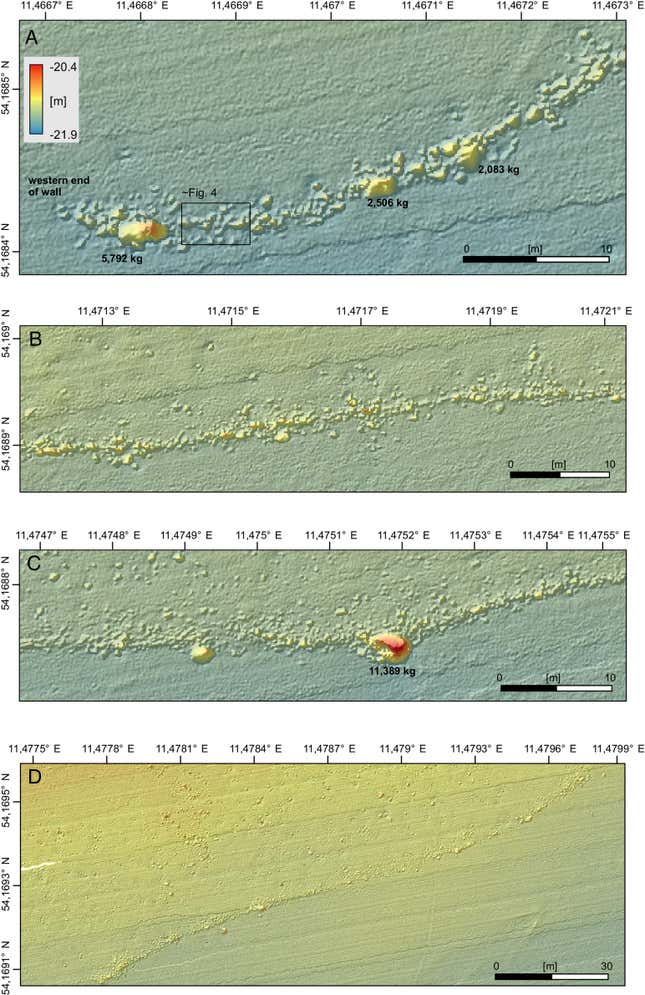Divers working off the coast of Rostock, Germany, have found the broken-up remains of a wall on the bottom of the Baltic Sea. Researchers believe the Stone Age construction is over 10,000 years old, potentially making it the oldest human megastructure in Europe, and was likely used to herd prey during hunts.
The wall dates to a time when the local sea level was lower. Around 8,500 years ago, the sea levels rose and swallowed the structure, which now sits at a depth of 69 feet (21 meters). As the team notes in their paper describing the find, published this week in the Proceedings of the National Academy of Sciences, the wall is “thrilling” not just for its age but because of its sociocultural implications.
The paper cites the words of Ashley Lemke, an archaeologist at the University of Texas at Arlington, who noted that “permanent hunting structures anchor [the foragers] to certain places on the landscape and create sociopolitical and economic tensions concerning ownership, territoriality, leadership, labor aggregation, group size, and other social dynamics.” In other words, the wall’s discovery indicates that a certain group (or perhaps multiple groups) had enough claim to the now-submerged land, and enough human power, that they were able to construct and make use of massive architecture.

The roughly 0.6-mile-long (1-kilometer) wall is composed of an estimated 1,673 rocks, most of which weigh comfortably less than 220 pounds (100 kilograms). However, several hundred stones are heavier; the largest is a whopping 25,100 pounds (11,389 kilograms). It generally does not exceed 3 feet (1 meter) in height. When the structure was still above water, it ran alongside an ancient lake or bog. The stones’ placement “argues against a natural origin by glacial transport or ice push ridges,” the team wrote in the paper.
Humans—Homo sapiens, but also our nearest cousins, Homo neanderthalensis—modify the landscape around them to make tools, create fire, and establish settlements. Some of the largest-scale changes to the landscape are those made for hunting.
In 2022, archaeologists found hundreds of pits around Stonehenge in southwestern England. The pits predate Stonehenge by thousands of years, that team concluded, and they were likely hunting traps for large game like red deer, boar, and aurochs. Changing the environment for hunting was happening all over the world; last year, archaeologists in Saudi Arabia found apparent blueprints for large rock hunting structures, called kites, carved into rock. That team estimated the carvings were between 7,000 and 8,000 years old.
The submerged wall remnants appear to have had a similar use to the kites—they would have been a drive lane for wild animals. These large stone structures would effectively corral the game, making them easier prey for hunters. The team posits that its likeliest use was hunting Eurasian reindeer (Rangifer tarandus).
Whatever the quarry and whoever the hunters, the wall is a rare example of a well-preserved Stone Age structure in Europe. Dating the wall exactly will be difficult, but the oldest-known drive lane was found via luminescence to be about 10,000 years old, so the structure in Germany is up there with the oldest.
More: Scientists Reveal Genomes of 356 Hunter-Gatherers Who Lived During Last Ice Age

